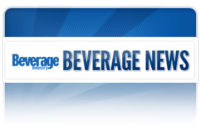2007 Engines Meet New EPA Standards
David Kolman
This month, manufacturers of on-highway diesel truck engines roll out their new models outfitted with exhaust-scrubbing technologies to meet the more stringent 2007 federal diesel emissions regulations. Mandated by the United States Environmental Protection Agency, these regulations dramatically reduce discharges of both particulate matter (soot and ash) and oxides of nitrogen (NOx).
Particulate matter must be reduced by 90 percent from
current levels and oxides of nitrogen by approximately 50 percent. Particulate matter is formed by the incomplete combustion of
fuel in diesel engines. Oxides of nitrogen are formed in small amounts
during combustion as a result of the combination of nitrogen and oxygen in
the presence of high temperatures and pressures.
Along with engine modifications and exhaust
aftertreatment devices, meeting the reduced pollutants standards requires a
change in diesel fuel and engine oils. Since 1993, diesel truck engines
have been using low-sulfur fuel, which emits 500 parts per million (ppm) of
sulfur. For the 2007 engines, the EPA requires the use of ultra-low sulfur
diesel fuel. It emits only 15 ppm of sulfur, a 97 percent reduction in the
sulfur content compared to low sulfur diesel.
The U.S. EPA has estimated that the new fuel will cost
about four to five cents more, but it is expected to lead to lower
maintenance costs and longer engine life, as well as offer environmental
benefits.
Engine oils have been reformulated due to the
particular needs of the 2007 diesels. Classified as CJ-4, the new oils,
also called low-ash oils, have been designed with better wear protection,
higher oxidation protection and better soot-handling characteristics than
the currently used CI-4 oil.
Engine manufacturers, with the exception of
Caterpillar, are using exhaust gas recirculation (EGR) technology to meet
the 2007 emissions standards. These systems accomplish emissions reduction
by capturing exhaust gases and returning them to the engine’s
combustion cycle, along with fresh air and fuel. The recirculated exhaust
reduces combustion temperature, which reduces the formation of NOx.
Some of the new engines also will be using a diesel
particulate filter (DPF). These typically contain a porous substance to
“strain” and “catch” the particulate matter from
the exhaust stream and prevent these particles from reaching the
atmosphere.
Over time, these traps “fill up” and need
to be periodically cleaned by means of a regeneration process. Otherwise,
the filter can become plugged and adversely affect the engine’s
performance and fuel economy. This regeneration process typically is
achieved by burning off the trapped particulate matter.
Two types of regeneration exist: passive and active.
With passive regeneration, particulate matter is continually burned while a
vehicle is driven. Active regeneration refers to a periodic burning of
particulate matter by adding a small amount of diesel fuel into the exhaust
gas.
To comply with the new regulations, Caterpillar is
using its ACERT (Advanced Combustion Emission Reduction Technology)
engines, with an enhanced combustion process called Clean Gas Induction
(CGI) — a closed crankcase ventilation system and diesel particulate
filter system with active regeneration.
While regeneration burns off particulate matter, it
leaves a residue of fine ash. Consequently, DPFs must be periodically
cleaned out. Some must be removed for this routine service, while others
can be cleaned without removal. The cleaning process requires specialized
equipment and handling.
Diesel particulate filters resemble mufflers, but are
larger. They also eliminate the need for mufflers because they quiet
combustion noise better.
The 2007 diesel engines will increase the price of a
new truck and — as would be expected — will require some new
maintenance procedures. The engine manufacturers say the engines are
“built to deliver outstanding fuel economy and
performance.”
The next change in on-highway diesel truck engine
emissions standards comes in 2010. These regulations are even more
stringent and will require additional add-on equipment and devices to
further cleanse pollutants.
David Kolman is a veteran truck communicator, keynote
speaker and long-haul trucker. Commissioned as an Honorary Colonel on the
Kentucky governor’s staff for his work promoting traffic safety, he
actively participates in trade associations and reports news and
information about the trucking industry for broadcasting and print media.
Equipment news roundup
International Truck & Engine is making Meritor WABCO’s Hydraulic Power Brake (HPB) system standard on its
medium-duty RXT, 3200, 4200 4x4 and 4000 Series 4x2 models (with the
exception of the mid-cab tractor). The system provides optimized braking
power and reduced stopping distances.
Kenworth is offering its
updated Push Less Air, Pull More Profit — a guide to improving fuel economy. It emphasizes the
importance of spec’ing trucks for aerodynamics and fuel economy, and
provides driver tips and proper maintenance steps. The guide is available
for download from Kenworth’s Web site at kenworth.com.
Mack Trucks is making its
Road Stability Advantage (RSA) system by Bendix standard on its highway vehicles. The system deactivates the
throttle and selectively applies the brakes in sharp curves, sudden lane
changes or obstacle avoidance maneuvers.
Michelin Tire has
introduced its XZA2 Antisplash tire, an
all-position radial tire optimized for splash reduction in steer axle
service. It is said to reduce the splash
trajectory height by more than 50 percent compared to standard truck tires.
J.D. Power and Associates’ 2006 Medium Duty Truck Customer Satisfaction Study ranked Peterbilt highest in customer satisfaction among conventional cab
medium trucks, followed by Kenworth, GMC Truck, Freightliner, Sterling and
Chevrolet. Chevrolet placed
highest in medium-duty truck dealer service for a second consecutive year,
followed by GMC, International and Kenworth. The study analyzes customer
satisfaction with 2004 model-year trucks across a number of important
areas, including vehicle performance, product quality, dealer service,
dealer parts and manufacturer image.
Fleettechnician.com is a
new Web site specifically for diesel mechanics and fleet technicians. It is
designed to be a one-stop resource where mechanics and technicians can find
employment opportunities and get industry information.
